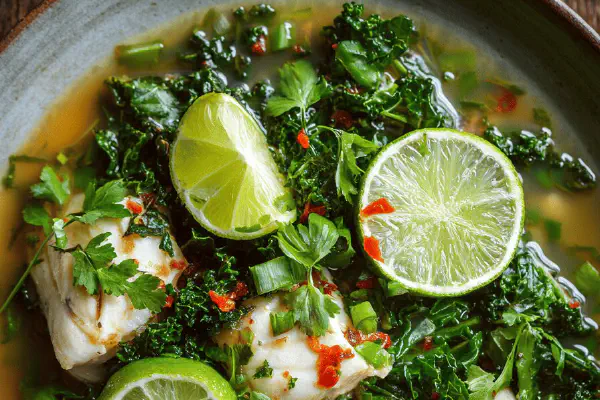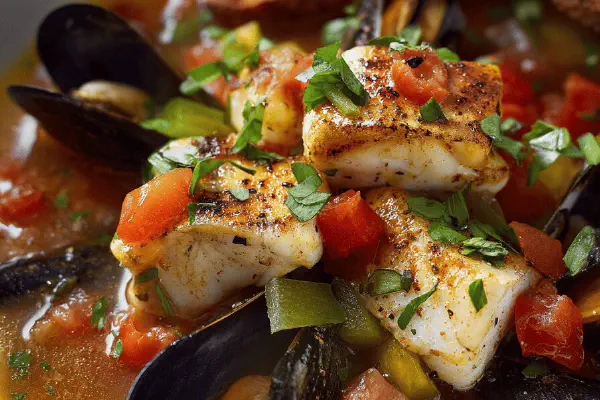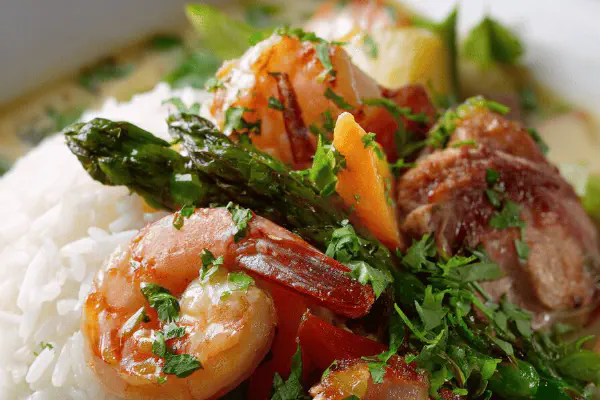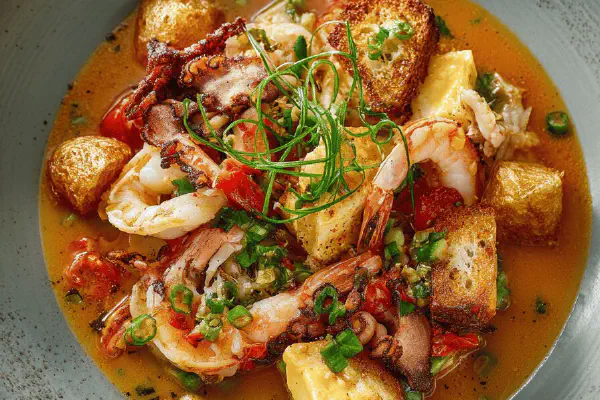Featured Recipe
Lobster Bisque Reworked
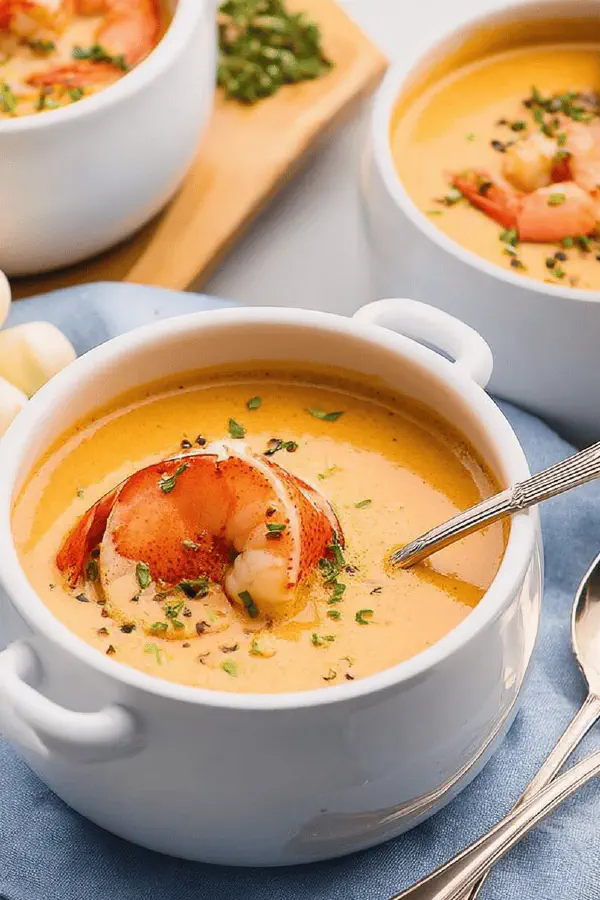
By Kate
"
Lobster bisque made with slightly less butter and olive oil, swapped paprika for smoked chili powder, tomato paste replaced by roasted red pepper purée. Simmering times adjusted, steps reshuffled for better flavor layering. Heavy cream reduced by 20 percent, sherry swapped for dry vermouth. Techniques highlighted with visual cues like onions turning translucent and reduction thickening. Focuses on using leftover shells or langostino, plus tips for emergency substitutions like clam juice for broth. Texture balanced by immersion blending halfway and folding meat gently to avoid toughness.
"
Prep:
7 min
Cook:
28 min
Total:
35 min
Serves:
8 servings
soup
seafood
French-American
Introduction
Butter melting, faint sizzle from shallots hitting hot fat. Classic bisque starts simple but requires attention. Carrots and celery don’t just add sweetness or crunch—they build a flavor backdrop. Garlic and thyme punch up, layering aroma right away. Deglaze with white wine; that hiss and bubble is flavor extraction in action. Rich broth anchors the dish here, but if you can’t find seafood stock, clam juice or homemade shell stock works. Smoked chili powder swaps paprika for subtle heat and depth; roasted red pepper purée adds complexity beyond basic tomato paste. Blending halfway keeps texture interesting—too smooth and you lose character; too chunky and it’s off balance. Heavy cream temp is delicate, swirl and keep heat low or risk curdling. Lobster or langostino meat folds in last, cooking fast, becoming opaque and tender. Season carefully—salt and bright cracked pepper tie all layers together. Garnish with chives to cut richness and sharpen presentation. Emergency tip: don’t overcook seafood or cream, both unforgiving. Fail this and texture is rubbery or curdled. Good bisque balances richness with subtle complexity. Trust visual cues more than the clock.
Ingredients
About the ingredients
Butter and olive oil fraction split to balance flavor and smoking point. Too much butter = heavy, but butter adds silkiness. Shallots preferred over onions—milder, sweeter for subtle layering. Carrots and celery diced small to release sweetness but stay noticeable if unblended. Garlic amount restrained; burns easily in low heat. Use fresh thyme stems; dried is too one-note and easy to overdo. White wine presence crucial to lift acidity; dry is better but any wine with little residual sugar works. Broth quality impacts everything; homemade shell broth preferred but canned clam juice is reliable fallback. Smoked chili powder introduces depth without overpowering paprika’s brightness. Roasted red pepper purée swipes umami and color in place of tomato paste’s acidity. Heavy cream reduced slightly to avoid cloying finish. Lobster meat preferred but langostino doesn’t disappoint if cooked briefly. Dry vermouth adds subtle herbaceous note, easily swapped for more wine or brandy. Fresh cracked black pepper preferred over preground for sharper bite. Chives cut through fat like a sharp knife. Always season last, tasting before final adjustments.
Method
Technique Tips
Low heat approach on initial saute is key to developing sweetness without burning. Watch shallots carefully; browned spots impair bisque’s clarity. Garlic and thyme added next to infuse aroma but avoid garlic turning bitter—stir constantly. Deglazing with wine releases fond stuck to pot, containing concentrated flavor; reduce enough to avoid harsh alcohol taste but not dry out completely. Simmer with broth plus smoked chili and pepper purée; aim for slight reduction, thickening slightly around edges. The halfway blend is efficiency: don’t puree all solids to keep textural interest and prevent overly heavy mouthfeel. Heavy cream stirred in off high heat, swelling richness evenly without breaking. Lobster or langostino folded gently; simmering briefly prevents rubbery texture. Salt and pepper final because cream and broth vary in salt. Use nose and eyes more than timers: sizzle softens, bubbles shrink, liquids thicken—that’s your guide. Garnish last so herbs stay bright. Pro tip: if bisque looks grainy or separated, whisk vigorously off heat or quickly reblend; keep heat patient and controlled every step.
Chef's Notes
- 💡 Watch shallots closely; translucent not brown. Medium-low heat. Essential for flavor backbone. Garlic mustn't burn—quick stir for best results.
- 💡 Blend halfway—texture matters. Keep some pieces; avoids heavy mouthfeel. Too smooth? Lose character. Visual cues like velvety texture signal done.
- 💡 Broth quality impacts flavor hugely. Homemade preferred. If out, use clam juice—still works! Stock with shells? Boil with veggie scraps for quick fix.
- 💡 Heavy cream—important but tricky. Stir in low heat. Watch temperature—curdling is a risk here. Skip that mistake; smooth richness without clumping.
- 💡 Final seasoning key. Taste before salt or pepper. Broth varies. Control heat; please don’t rush. Curdled cream or tough seafood? Avoid both.
Kitchen Wisdom
What if my bisque is too thick?
Add broth or water slowly. Adjust amounts, keep stirring. Always taste. Might need seasoning too. Fix can be easy.
Can I use frozen lobster or langostino?
Yes, just adjust cooking time. Thaw first. Quick simmer needed. Tough seafood? Don't overcook. Be cautious.
How to store leftovers correctly?
Fridge for 3 days max. Freeze for 2 months but don't freeze cream. Creamy texture fails when reheated. Separate first.
Substitutes for lobster?
Langostino works fine. If price high, use shrimp, scallops. Clam juice works for broth. Find balance to beat cost issues.
